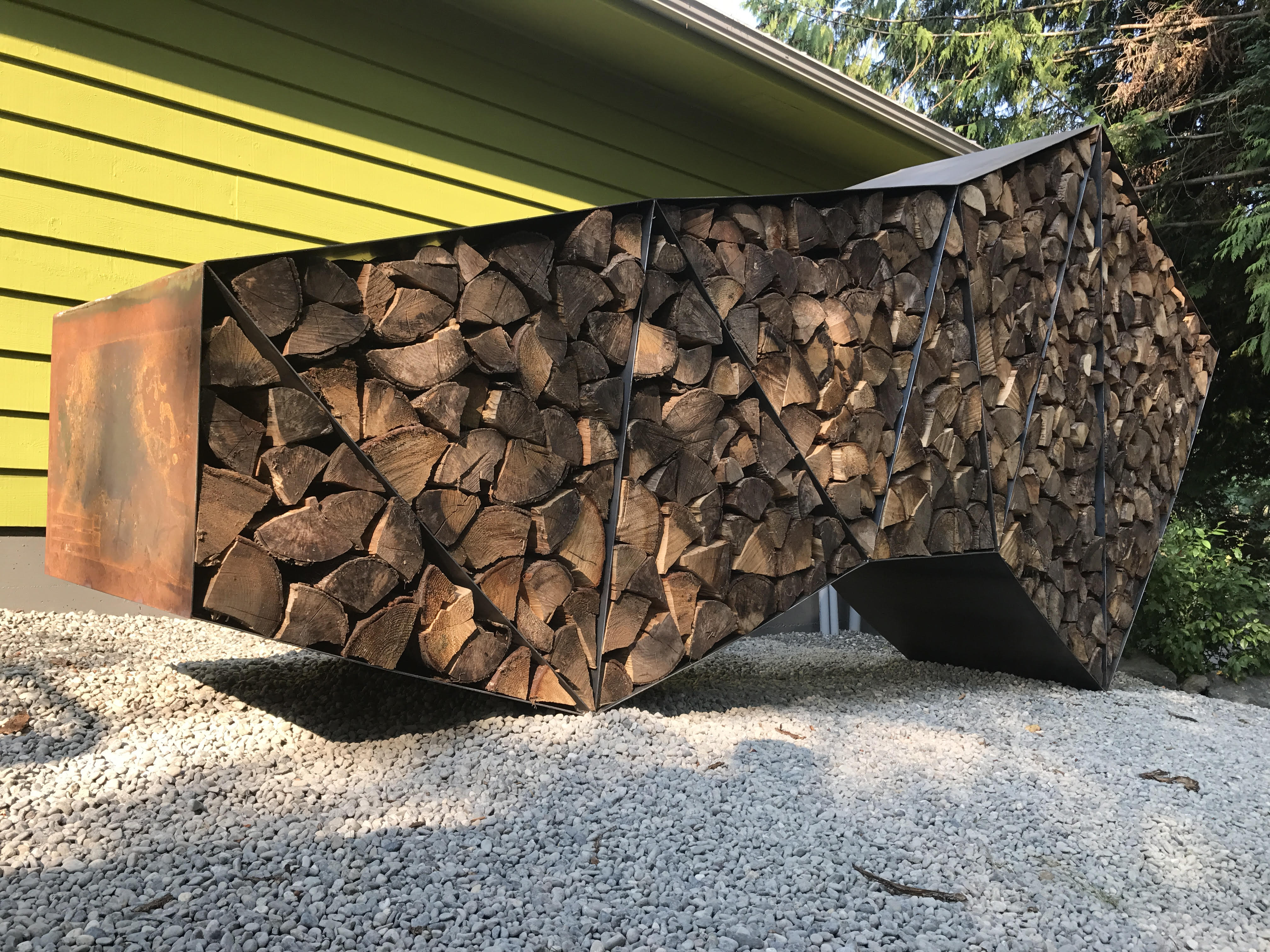
This summer I decided to get serious about managing my firewood. In the Northwest it is said that one’s character can be measured by how they care for their firewood, and I was certainly found wanting. The structure shown here was my attempt to regain my standing – a triangulated sheet metal truss that touches the ground at two points. The irregular truss elevates the wood off the ground, provides needed ventilation and sheds the water to either side of the pile. It is three feet wide so the wood can be loaded in both sides, doubling the storage capacity while keeping the outside face of the wood flush. This is clearly a very pragmatic, rational work that solved several problems associated with firewood management. So, why were all my neighbors and passersby calling it a sculpture?
I find this curious because it was not my intention to make a sculpture, nor did I ever discuss the structure in those terms. Our need to label things is fascinating – whenever we come across something unique our minds scramble to make sense of it. We compulsively categorize but most of us don’t like to be categorized – I certainly don’t. It is not that I don’t understand and appreciate the benefits of identifying differences or unique characteristics – it is more about the mindset categorization tends to produce. Once you put something in a particular place, it is troubling when it moves. Rather than recalibrating our categories we spend considerable time and energy trying to keep things within the arbitrary boundaries we constructed. One distinction of particular interest to me is the tension that exists between art and design. I think many designers would like to consider themselves artists, although there are an equal number that shun this label in favor of the term “problem solver.”
Artists and the art world justifiably defend the boundaries that define their pursuits from the onslaught of disinformation regarding the nature of art. Labeling something as “art” has been a common strategy for increasing something’s perceived value – but we reached a point where a common attitude is that everything is art and everyone is an artist.
With a label so porous it becomes meaningless and the valuable role of art and the artist gets lost and devalued. The term “fine art” was created primarily to differentiate serious artistic pursuit from everything that is erroneously labeled “art.” The term “craft” has been used to separate those interested in traditional means of making from the “fine arts.” “Design” is a term often used to describe something that we make that has a practical purpose.
Although I understand and am sympathetic to these distinctions, I have grown weary of the discussions that surround these labels. They tend to devolve into protecting one’s perceived turf and to what end or benefit? Although I have never shied away from technical challenges, I don’t consider myself a “problem solver” – I will gladly leave that badge of honor to the engineers. I have instead always looked for opportunities and relished exploring the possibilities. I think this mindset is a defining characteristic of any artistic pursuit. Artists solve technical problems but they do so to exploit opportunities and probe the possibilities. If I focused on trying to “solve a problem” a blue tarp would have done the trick. As for me, I would rather live in the world of opportunities and possibilities than focus my energies addressing what is wrong. I think that is what people intuitively sensed and appreciated about the structure that holds my firewood.

“Our need to label things is fascinating – whenever we come across something unique our minds scramble to make sense of it.” Great statement! I find that to be very true in the Christian world. People are often more concerned with labeling something than they are with experiencing the same.